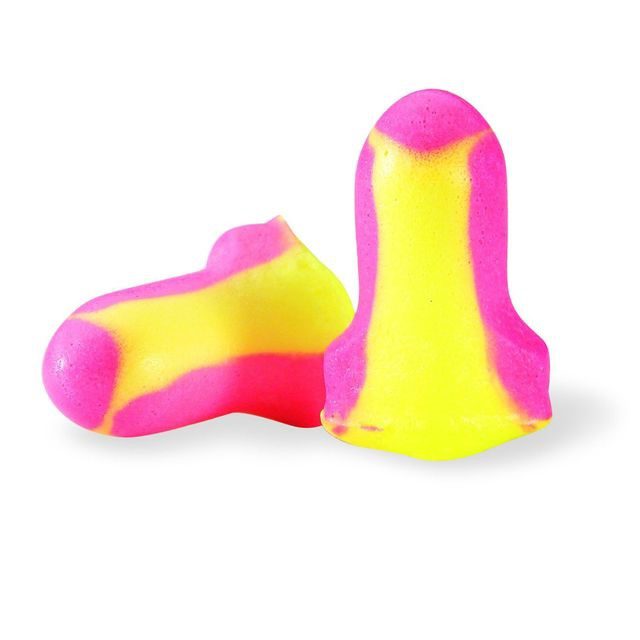 Ear Plugs-
Ear Plugs-
Plugs are the cheapest form of hearing protection, and usually have around 30dB of noise reduction. This is the most popular form of hearing protection in the work place, however, they only work if you insert them properly. You must roll the foam in between your finger tips and insert gently into the ear canal, holding until the foam expands to the shape of your ear canal. For extra protection, as well as to ensure noise is being properly reduced, use this form of hearing protection as well as ear muffs over top. Ear plugs should be replaced and discarded after each use.
 Muffs–
Muffs–
Ear muffs are a great tool to use to protect your hearing. There are different types of ear muffs, such as ones that attach to a hard hat, your typical over the head ear muffs, as well as ones with FM radio transmitters inside to help with tinnitus. Ear muffs range in their dB reduction, however a usual set will reduce noise by 20-30dB. Muffs are very easy to use by simply slipping them over top of your ears, and they will seal of the entire ear and reduce the noise passing through. When buying muffs be sure to check the manufacture replacement date, as most muffs only have a life span of around 2 years.
 Custom–
Custom–
Custom Hearing protection is the more costly option, however they may be cheaper in the long run considering they do not have to be replaced as often. Custom hearing protection is also known to help prevent ear infections. To make a custom ear plug, ear impressions must be made, which will be turned into a device formed perfectly to the shape of your ear canal. This provides maximum comfort, as well as helps protect your ears better than a simple plug. Custom molded hearing protection will typically last between three to five years.
